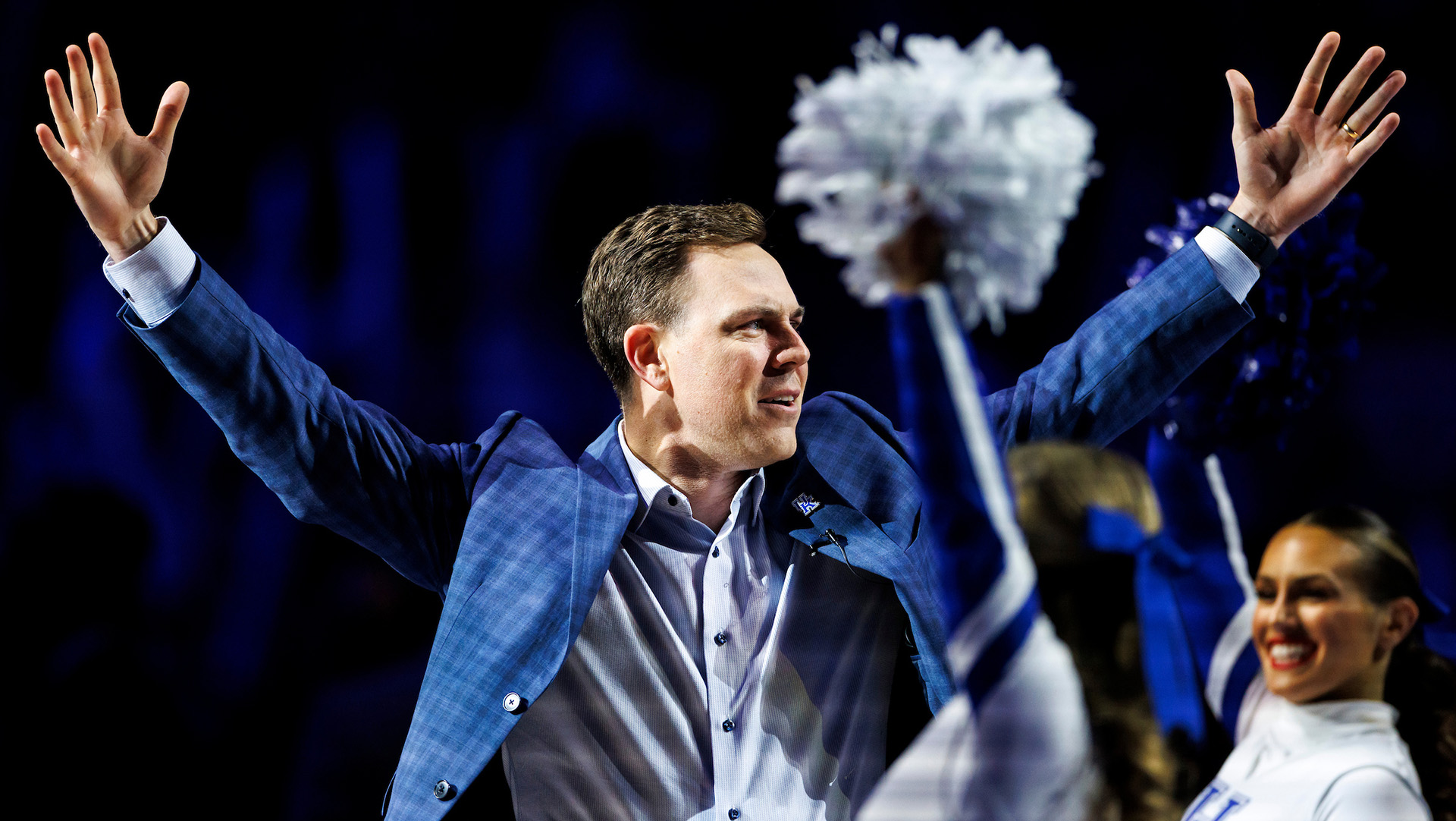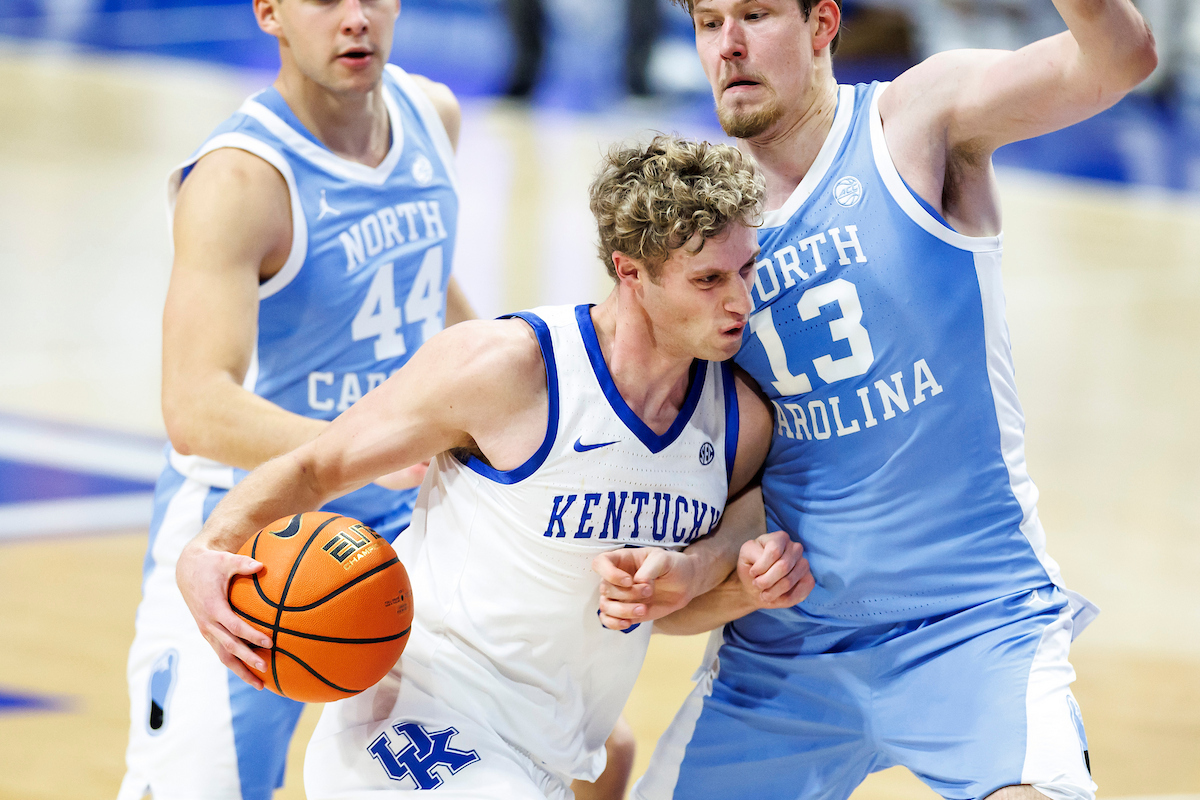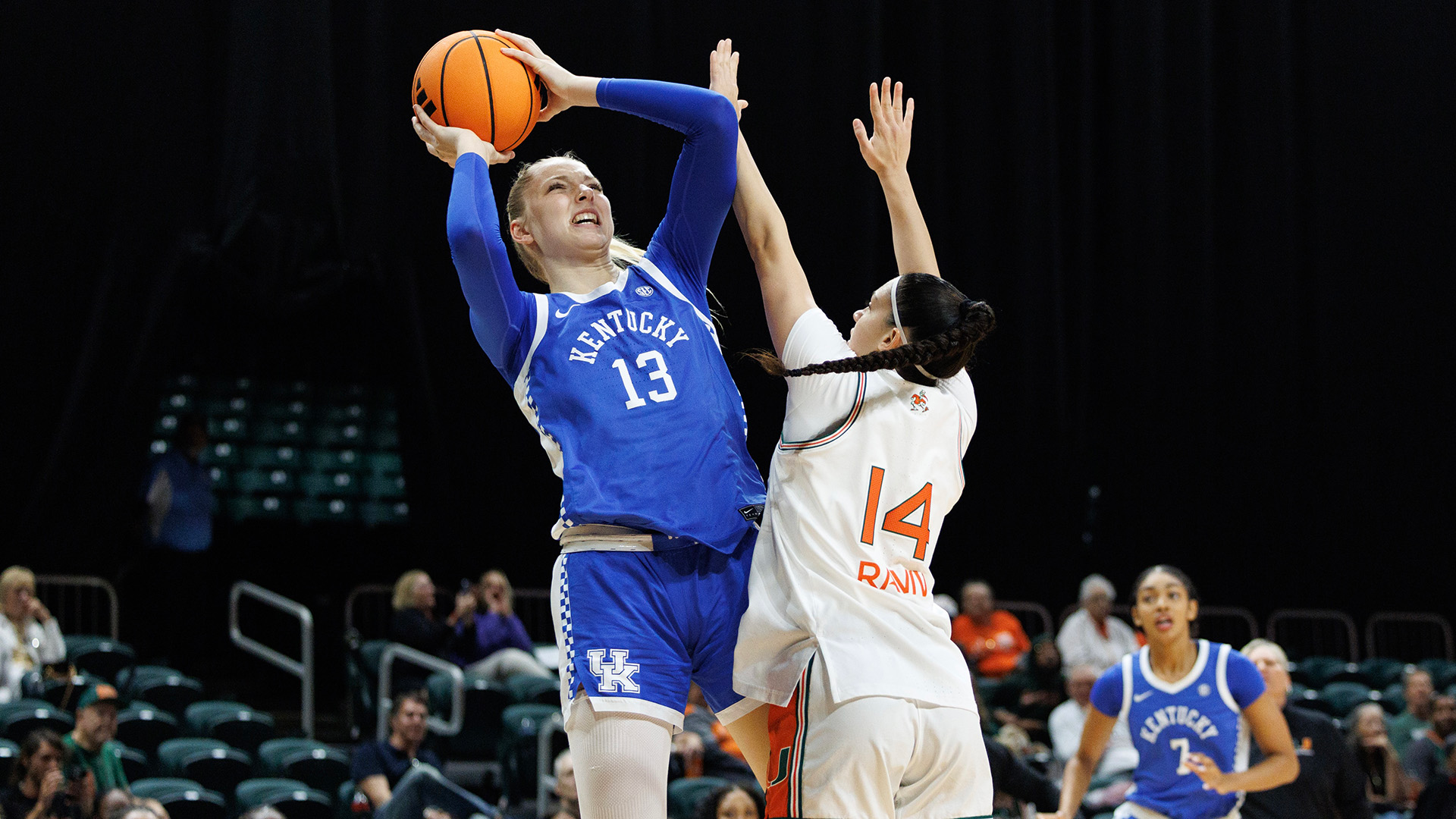Shively Training Facility

The primary focus of the Shively training program is to provide the student-athletes of the University of Kentucky with a solid foundation in every aspect of their preparation, so that they may reach their full athletic potential and remain injury-free.
The Shively Weight Room is home for the following sports:
- Men’s Golf
- Women’s Golf
- Gymnastics
- Men’s Soccer
- Women’s Soccer
- Softball
- Swimming & Diving
- Men’s Tennis
- Women’s Tennis
- Track &
- Cheerleading
Address:
712 Sports Center Drive
Lexington, Kentucky 40506-0113

Shively Weight Room and Other Facilities
The Shively weight room is a 3700 square foot facility which is capable of having 36 athletes train at one time. This space allows for flexibility with scheduling team workout times as well as providing an intense and disciplined atmosphere.
With its 12 multi-purpose lifting stations where athletes are able to perform all of their Olympic style lifting, squats, presses and pulls, the efficiency of each workout is easy to maintain.
The extra space has been well utilized by providing two open areas. The first is designated for footwork, agilities and fitness on the 12 True upright stationary bikes.
The second is an all-purpose mat which is used for plyometric drills, core stability and flexibility exercises. These areas coordinate to help support the total-body training philosophy that the staff programs and teaches.
As well as using Shively weight room, the athletes also train at a variety of different facilities depending on the time of year and where they are in their competitive seasons. The following is a list of the other facilities and some of the drills that are performed there:
-
Nutter Field House
– Speed School, Conditioning, Plyometrics, Agilities, and Footwork
-
Commonwealth Stadium
– Incline Ramps and Stair Work
-
Shively Track
– Conditioning
-
Arboretum
– Conditioning
-
All Individual Sport Complexes and Facilities
Olympic Sports Strength & Conditioning Philosophy
I. TRAINING:
1. DEVELOPMENT OF CORE STRENGTH
The center of human power and strength originates in the center of the human body. Imagine the body as a 3-link chain with the head and arms being one link, the core (torso / trunk) being the second link, and the legs being the third link. An athlete is only as strong as his/her weakest link. If the core link is weak or inflexible, there is little chance of maximizing athletic potential because all body movements stem from the core.
2. TRAIN USING GROUND-BASED, MULTI-JOINT LIFTS
Most athletes participate in ground-based, power sports that require: balance, coordination, and the body to function as a unit in an explosive fashion in multiple directions and different angles. Therefore, the emphasis of our training is on total body athleticism and flexibility utilizing free weights, rather than having the body weight supported by a machine and forcing isolation of just one muscle group. The foundation of our training is the olympic lifts, squats, pulls, and press – ground based movements that incorporate several muscle groups working in multiple planes.
3. TRAIN FOR POWER (RESULTING IN INCREASED SPEED)
Power = (Mass Moved x Distance) / Time
The less time it takes to move a mass a certain distance, the greater the power output. As seen in the above formula, an increase in speed results in an increase in power. By training with explosive lifts, squatting movements, medicine balls, resisted / incline sprints and speed drills, we can greatly increase the potential for developing powerful athletes.
4. TRAIN ATHLETICISM
Many factors are included in athleticism: strength, power, speed, agility, flexibility, coordination, fitness level and mental toughness are just a few. “Speed School” in the off-season is an example of one of the ways we take the athletes’ strength gains and transfer them into sport-specific agilities, footwork patterns, plyometrics and fitness. Our goal is to constantly maximize overall athleticism, therefore each workout is designed to enhance these areas.
5. TRAIN AS A TEAM
When a team trains together, it provides another opportunity to develop chemistry, teamwork, leadership skills and a competitive environment. Within this competitive environment, teams can work on mental toughness, attacking the weights and maintaining a positive attitude. By enabling athletes to work on these things as a team, it helps to promote a stronger sense of unity, therefore making it harder to “fold” under pressure.
6. PREPARING LIKE CHAMPIONS
A. WORKOUTS ARE SHORT AND INTENSE
Workouts are highly organized, short in duration and extremely intense. Training sessions are run just like a sport practice, where the strength coach keeps the pace moving, thus ensuring an economic use of time.
B. WORKOUTS ARE CHALLENGING
Workouts are physically and mentally challenging, requiring focus, discipline and intense effort. By training this way, athletes learn to meet challenges “head-on” and are better able to handle pressure when it is applied in competition. Maintaining a positive, “never back down” attitude is of utmost importance.
C. WORKOUTS ARE PERIODIZED
The volume, intensity and focus of workouts vary depending upon where an athlete is in their competitive season (ie. pre-season, in-season, off-season, 2nd competitive season). Below is a sample schedule of how our athletes will train on a yearly basis.
Olympic Sport Strength & Conditioning Philosophy
II. RECOVERY / NUTRITION:
1. MAXIMIZE RECOVERY
Although team training workouts are very important, the success or downfall of an athlete has a lot to do with what the athlete does between workouts. Fitness does not increase during workouts, it increases between workouts during periods of rest as the body recovers and adapts to the stresses of training. With proper rest and recovery, an athlete’s body is able to adapt and make the physiological and performance improvements that the training is designed to bring about. Therefore, an athlete’s ability to recover between workouts plays a large role in how hard the strength coach can continue to push the athlete during workouts over time.
Athletes are encouraged to do everything they can within their power to ensure that the recovery process is maximized. This includes:
- getting a solid 7-8 hours of sleep every night
- participating in light activity between workouts, which increases circulation and promotes nutrient delivery and metabolic waste removal
- being organized and keeping on top of academic demands (thus reducing stress and the need to pull “all-nighters”)
- having the proper balance between academics, athletics, and social life to ensure mental well-being
- consuming an adequate amount of nutrients at the right times (see Nutrition below).
2. PROPER NUTRITION / HYDRATION
Athletes are encouraged to take their eating and drinking habits as seriously as they take their training. Proper nutrition not only enhances overall health, but it can also have a major impact on recovery and regeneration after intense training.
During workouts, athletes deplete their bodies of fluids and electrolytes, break down their muscle tissues and use up their energy stores. Nutrition is a key component in the recovery process because it provides the raw materials with which an athlete’s body can make the physiological adaptations to training. By consuming the right nutrients at the right times, recovery can be brought about more quickly and thoroughly.
Following our workouts, we encourage our athletes to do a couple things nutritionally to speed up the recovery process:
- First, it is important to consume fluids and electrolytes (ie. Gatorade) in order to replace what is lost through sweating. If an athlete does not properly re-hydrate before the next workout, he/she is putting themselves at risk for muscle cramps, overheating or other problems when they train again.
- Secondly, it is important to consume protein after workouts so that muscles can be fully repaired. Weight training damages and disrupts muscle tissue. By consuming an adequate amount of quality protein after workouts, new muscle proteins can be built and the muscle can repair, adapt and become stronger.
- Thirdly, energy stores must be replenished. Carbohydrates are the muscles’ main fuel source during moderate-to-high intensity exercise. Therefore, consuming an appropriate amount of carbohydrates is critical in refueling hard-working muscles.
- Finally, we advise our athletes to eat more often, consuming 5-6 meals per day versus only 2 or 3. By eating smaller meals more often, two main benefits can be realized: 1) Fat loss is enhanced (because blood sugar levels are kept level and moderate, metabolism is boosted and satiety level is constant). 2) More muscle is preserved or gained (because the body is getting a constant supply of energy and never has to break down muscle proteins for energy, as well as having a constant supply of proteins for muscles to repair themselves).
III. MENTAL PREPARATION:
We believe that mental preparation is just as important as physical preparation in training to be a champion. Therefore we try to create a positive, competitive environment and incorporate different ways to develop the “championship attitude” in our athletes. We try to instill in our athletes that they can only approach being the best they are capable of becoming by making each day count and knowing that they can never make up for a lost day. Knowing this, we attempt everyday to develop the following values and attitudes of champions in our athletes:
Coachability
Champions are interested in learning all they can, mastering their skills to the fullest extent and acquiring every characteristic that helps them gain an edge. Champions show respect to their coaches, listen to their teaching and advice, and work hard to follow it.
Responsibility & Accountability
Champions accept total responsibility for their actions and never complain or make excuses. They realize that their attitude and effort are two things that are always under their control, and that they have a responsibility to themselves and their teammates to always approach practices and games with a positive attitude…..giving nothing less than 100% effort. Champions know that success only comes to those who work long and hard, and so they hold everyone on their team accountable for giving their personal best at all times.
Focus
Champions understand that success and attention to details, even the smallest details, go hand in hand. Therefore, the effort they give must be focused, must have a purpose and must have a sense of direction.
Discipline
Champion athletes make a habit of doing the right thing, on and off the field. They seek to create good solid habits, and then repeat them over and over until they become second nature. Champions understand that this discipline (code of conduct) will help increase their odds of being successful on a consistent basis.
Mental Toughness & Determination
Champion athletes realize that there will be times when they won’t “feel” like working, striving and pushing their minds and bodies to the limit of their potential, but they understand that being a champion is a choice that they make over and over every day. They make that choice to fight through those times and push themselves further and further, shattering all preconceived limits as they strive to reach their goals. For this reason, workouts are designed to be challenging so that athletes can learn how to meet difficult tasks head on with determination and a “never back down” attitude.
Leadership
Champions inspire their teammates to work and play at their best through their actions and attitudes. Champions lead by example, always giving great intensity and focus, never showing weakness and carrying themselves as “winners” at all times.
Confidence
Champions know that the harder they work, the tougher it will be for them to surrender during competition. In overcoming difficult challenges during training, champions build confidence as a result of these small victories they accumulate every day. And when they step into the competitive arena, they have confidence in knowing that they are well prepared, that they have invested and sacrificed greatly and that no one has out-worked them.
| TRAINING | ||||
| SEASON | WEIGHT LIFTING | CONDITIONING | RECOVERY | |
| IN-SEASON |
Times/Week: 2X Length: 30-45 Minutes/Session Focus: Keep nervous system fresh, maintain strength |
Times/Week: 1-2X Where: On court/field Focus: Sport specific agilities/fitness |
1 Day/Week | |
| OFF-SEASON |
Times/Week: 3X Length: 50-60 Minutes/Session Focus: Strength & power gains |
Times/Week: 2-3X Where: Track or field house for speed school Focus: Technique/general fitness |
2 Days/Week | |
| 2nd COMPETITIVE SEASON |
Times/Week: 2-3X Length: 40-50 Minutes/Session Focus: Bar speed, strength gains |
Times/Week: 1-2X Where: On court/field Focus: Sport specific agilities/fitness |
1-2 Days/Week | |
| PRE-SEASON |
Times/Week: 2-3X Length: 40-50 Minutes/Session Focus: Strength maintenance |
Times/Week: 1-2X Where: On court/field Focus: Sport specific agilities/fitness |
1 Day/Week | |



